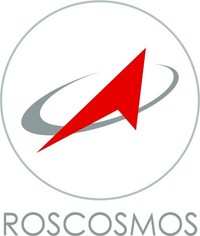Tue, Oct 05, 2010
Arianespace Will Launch ATV-2 Cargo Vehicle On February 15
NASA, the European Space Agency (ESA) and the Russian Federal
Space Agency (Roscosmos) agreed on Friday to update the
International Space Station launch schedule. The target launch
dates for the last planned space shuttle flight, STS-134 on
Endeavour, will be February 27, 2011, and the Automated Transfer
Vehicle-2 (ATV-2) will be February 15. Roscosmos will continue to
look at Soyuz launch and landing options to provide manifest
robustness.

The agencies agreed to the changes during discussions at the
International Astronautical Conference in Prague. Arianespace,
whose Ariane 5 rocket will launch ATV-2 into orbit from French
Guiana, has confirmed its commitment to launch on February 15.
The STS-134 flight will deliver the Alpha Magnetic Spectrometer
(AMS) to the station. The AMS is a state-of-the-art cosmic ray
particle physics detector designed to examine fundamental issues
about matter, and the origin and structure of the universe. The
flight will include three spacewalks and the installation of the
AMS to the exterior of the space station using both the shuttle and
station arms.

ATV-2, dubbed Johannes Kepler, is scheduled to dock on February
26 to the station. The cargo craft is designed to deliver more than
seven tons of experiments, fuel, water, food and other supplies to
the space station. While docked, ATV-2 will use its thrusters to
periodically boost the station's orbit, which decays with time. It
also can be used for emergency maneuvers, such as those required if
a piece of space debris is predicted to hit the station. This
capability saves critical attitude control propellant for the
station.

After about 3.5 months, the ATV-2 will undock from the station
and burn up harmlessly in the atmosphere over an uninhabited area
of the Pacific Ocean. The first ATV, Jules Verne, was launched in
March 2008 and reentered the atmosphere in September 2008.
More News
Pilot Also Reported That Due To A Fuel Leak, The Auxiliary Fuel Tanks Were Not Used On June 4, 2025, at 13:41 eastern daylight time, a Piper PA-23, N2109P, was substantially damage>[...]
Have A Story That NEEDS To Be Featured On Aero-News? Here’s How To Submit A Story To Our Team Some of the greatest new stories ANN has ever covered have been submitted by our>[...]
From 2023 (YouTube Edition): Reflections on War’s Collective Lessons and Cyclical Nature The exigencies of war ought be colorblind. Inane social-constructs the likes of racis>[...]
Aero Linx: Colorado Pilots Association (CPA) Colorado Pilots Association was incorporated as a Colorado Nonprofit Corporation in 1972. It is a statewide organization with over 700 >[...]
High Speed Taxiway A long radius taxiway designed and provided with lighting or marking to define the path of aircraft, traveling at high speed (up to 60 knots), from the runway ce>[...]
 NTSB Prelim: Piper PA-23
NTSB Prelim: Piper PA-23 ANN FAQ: Submit a News Story!
ANN FAQ: Submit a News Story! Classic Aero-TV: One Mans Vietnam
Classic Aero-TV: One Mans Vietnam ANN's Daily Aero-Linx (07.03.25)
ANN's Daily Aero-Linx (07.03.25) ANN's Daily Aero-Term (07.03.25): High Speed Taxiway
ANN's Daily Aero-Term (07.03.25): High Speed Taxiway





